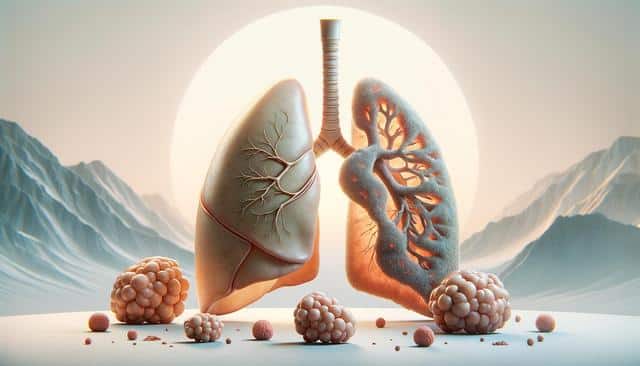
Recognizing Early-Stage Emphysema: A Closer Look at Lung Health
What Is Early-Stage Emphysema?
Emphysema is a form of chronic obstructive pulmonary disease (COPD) that involves damage to the air sacs (alveoli) in the lungs. In early-stage emphysema, this damage begins subtly, often going unnoticed until symptoms gradually interfere with daily activities. The alveoli lose their elasticity, making it harder for the lungs to expel air, which leads to shortness of breath over time. Although early symptoms are mild, such as a persistent cough or occasional wheezing, they signal an underlying issue that requires attention. Early detection is crucial, as it opens the door to interventions that can slow the disease’s progression and preserve lung function.
The initial damage often stems from long-term exposure to irritants. Common contributors include:
- Inhaled pollutants, such as tobacco smoke or industrial fumes
- Airborne particles from dust, chemicals, or combustion
- Genetic factors in rare cases, such as alpha-1 antitrypsin deficiency
Understanding the root causes helps in identifying those at greatest risk and encourages proactive lung health monitoring.
Recognizing the Early Symptoms
Because early-stage emphysema develops gradually, many individuals dismiss its symptoms as signs of aging or a temporary illness. However, recognizing early warning signs is vital for timely medical evaluation and intervention. The hallmark symptoms include:
- Shortness of breath during physical activity
- Chronic cough that doesn’t resolve over time
- Mild wheezing or chest tightness
- Unusual fatigue or reduced exercise tolerance
These symptoms may be subtle, but they reflect declining lung elasticity and airflow obstruction. Individuals experiencing persistent respiratory symptoms should consult a healthcare provider for spirometry testing or other lung function assessments. Early diagnosis not only provides clarity but also allows patients to take preventive measures and avoid further lung damage.
Factors That Increase Risk
Understanding what increases the likelihood of developing emphysema can guide effective prevention strategies. Several risk factors are well-documented, with lifestyle choices playing a central role. The most significant contributors include:
- Smoking: The primary cause of emphysema in most individuals
- Occupational exposure: Jobs involving dust, fumes, or chemicals
- Air pollution: Long-term exposure to polluted environments
- Genetics: Family history of respiratory illnesses or genetic conditions
While some factors like genetics are beyond control, others can be managed through conscious lifestyle changes. For example, quitting smoking and wearing protective masks in hazardous work environments can significantly reduce risk. Establishing awareness of these factors empowers individuals to make informed decisions about their lung health.
Diagnostic Tools and Medical Evaluation
When early symptoms of emphysema appear, various diagnostic tools can help confirm the condition and determine its severity. A standard approach includes a physical examination and a review of medical history, followed by more specific tests:
- Spirometry: Measures airflow and lung capacity
- Chest X-rays: Can reveal visible lung changes
- CT scans: Provide detailed imaging of alveolar damage
- Arterial blood gas tests: Assess oxygen and carbon dioxide levels
These evaluations help healthcare professionals understand the extent of lung impairment and guide treatment plans. It’s important to note that while early-stage emphysema may not cause drastic functional limitations, early detection through these tests can prevent complications later on. Regular screening is especially recommended for individuals with known risk factors, even if they are not yet experiencing symptoms.
Lifestyle Adjustments and Ongoing Care
After an early-stage diagnosis, managing emphysema involves a combination of lifestyle changes and medical interventions aimed at maintaining lung function and quality of life. Quitting smoking is the single most impactful step, as it prevents further damage to the lungs. In addition, incorporating the following practices can contribute to better respiratory health:
- Engaging in pulmonary rehabilitation programs
- Staying physically active within personal limits
- Eating a balanced diet to support immune and respiratory function
- Using prescribed medications, such as bronchodilators or inhaled steroids
- Getting vaccinated against flu and pneumonia to avoid complications
Long-term management may also include regular checkups to monitor lung health and adjust treatment as needed. With early involvement, many individuals can maintain a fulfilling lifestyle and slow the disease’s progression. Emotional support and counseling may also be beneficial, as chronic illnesses can impact mental well-being.
Conclusion: Proactive Steps Toward Lung Health
Early-stage emphysema offers a valuable window of opportunity for intervention. By recognizing symptoms early and understanding risk factors, individuals can take proactive steps to preserve lung function. Lifestyle changes, medical evaluation, and regular monitoring play key roles in managing the condition effectively. For those at risk, awareness and timely action can make a meaningful difference in long-term respiratory health and overall quality of life.


